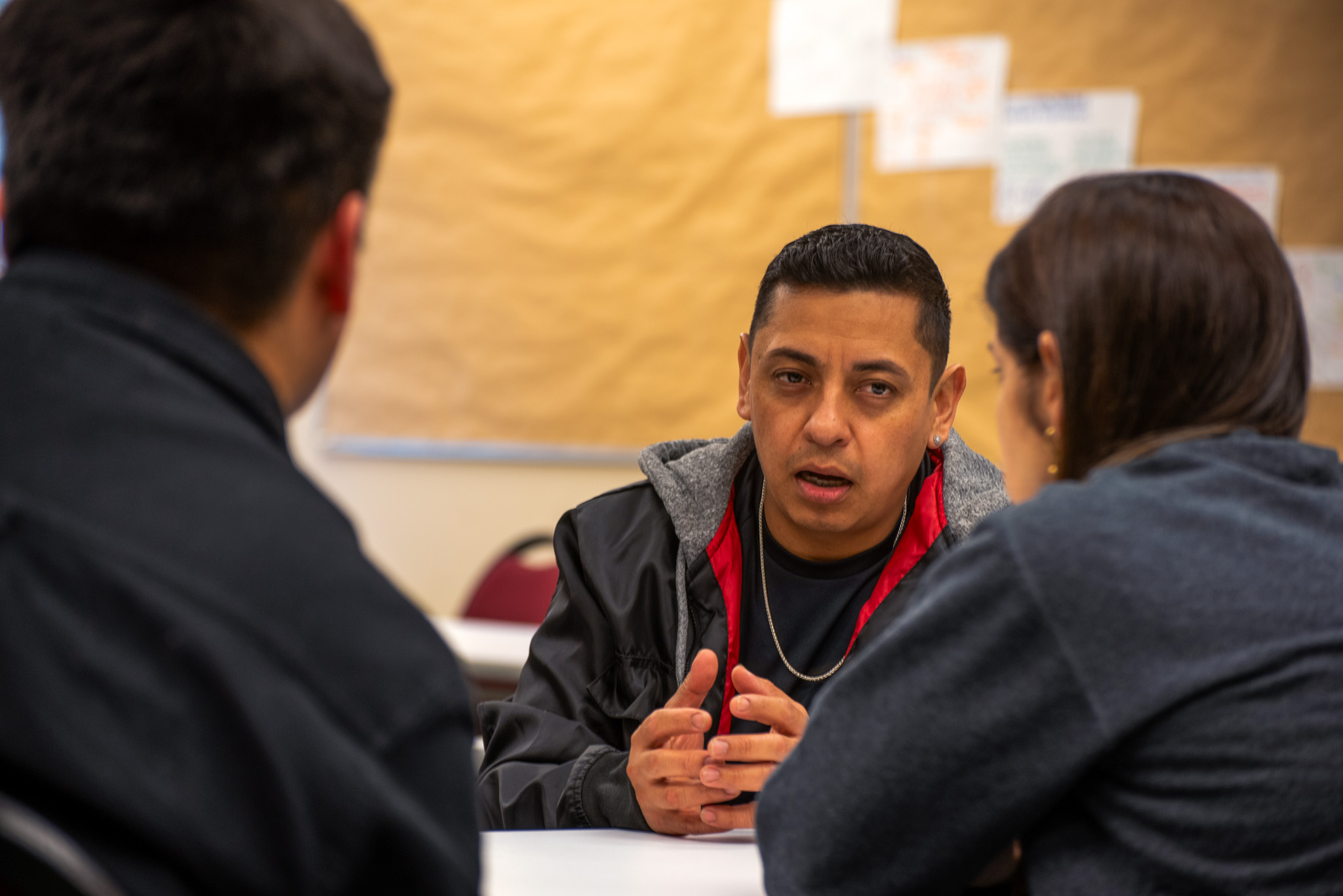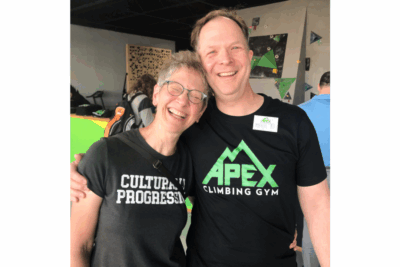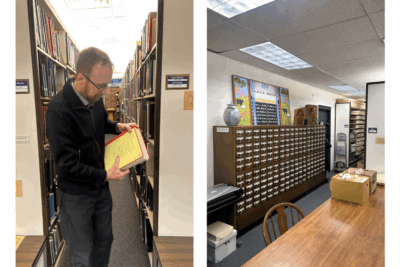In Goshen, Indiana, approximately 30.9% of the population identifies as Hispanic or Latino, with many speaking Spanish as their primary language, according to Data USA. For nearly a decade, Goshen College has responded to this linguistic and cultural diversity by offering English as a new language classes to adult learners from the community — who range in age from 18 to 70. What started as a small initiative has grown into a program that now serves nearly 200 students.
Launched in 2016 through GC’s Center for Intercultural and International Education, the ENL program does more than just teach English. As Renata Uzzell, lead teacher of the ENL program, said, “It’s a chance for [the students] to start making some connections and to see that there’s a chance to build community and to interact with the white community of Goshen or of Elkhart County.”One aspect of the program is a two day collaboration with the college’s Spanish 101 class, where beginner level Spanish students and adult English learners come together to practice speaking, listening and connection. said Cristobal Garza Gonzalez, associate professor of Spanish.
“The whole goal is to have students practice with a real person in a somewhat realistic situation, the language that they’re learning,”
During these sections, the first day is conducted entirely in Spanish. For many college students, this presents a challenge since they are still at a beginner’s level, but as Garza Gonzalez explained “It works out very well because if you have two people struggling [and know] very little and basic expressions, and then when you’re nervous, you forget what you’ve learned.” In that way, having one part with more proficiency helps to create a more conversational environment.
On the first day, the college students have an assignment where they create a biography about the people they are assigned. As a group they prepare questions and the whole section is in Spanish. Samuel Klopfenstein, a sophomore biochemistry major said, “When the list ran out, I came up with more questions, and it was more of a learning experience than I thought.”
“The Spanish speaker that I was talking with helped me out with some words that I was struggling with. It was more collaborative than I was expecting, and I felt like I learned a lot from it,” he said.
The first day not only helps the Spanish learners but also the speakers as they become the specialists. Uzzell said, “It gives them a chance to also be sort of the experts and be the teachers and put that value back on, they have skills, they’re not just factory workers, they have life experiences, they have things they’re bringing too and that they can share and they can be.” When reflecting about how the first section went, Osbin Amaym, a community member, said, “It was a little slow because we only speak in Spanish, and they [college students] say, you speak in Spanish fast, very fast, and we have to talk like, ‘hola, ¿qué haces en tu tiempo libre?’ and sometimes they didn’t understand what we were saying, but it was great.”
The second section happened two weeks later, this time they only spoke in English and there was no assignment. “The English session is more like a party. No, not really. But it’s more laid back.” Uzzell said. She added that “students get to practice more and they’re a little bit more confident in their English,” so this section is more focused on them practicing their skills. “A lot of times it takes a lot to get it out of them. They’re very shy in English,” Uzzell said.
The collaboration between Spanish 101 and ENL exemplifies the power of mutual learning. where native speakers and learners share their knowledge, as Garza Gonzalez said, “I think that the real wealth and the real importance, why speaking languages, foreign or your own …is important because it connects you with people.”




